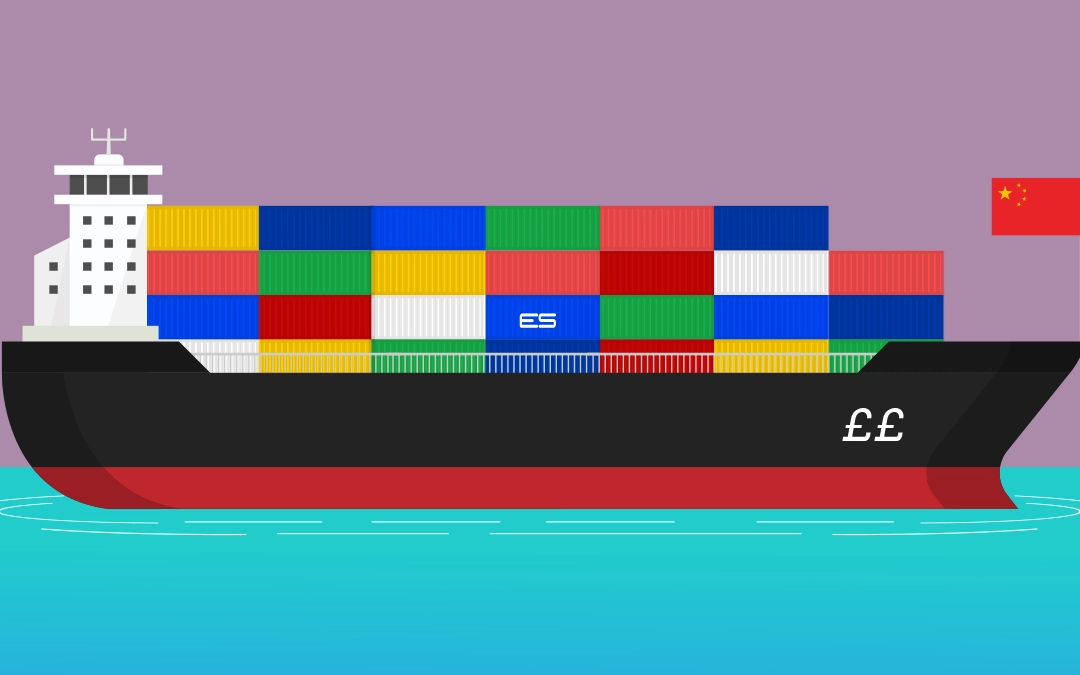Fluctuating costs are a concern for any business, and for the past few years in the PPE industry, shipping costs have caused significant consideration. Losing future pricing visibility made forecasting and annual planning difficult for some, while the logistical issues in shipping caused delays for others.
We spoke to Martin Craghill, CCL Logistics & Technology Trade Lane Manager, to get his thoughts on the current shipping environment and what we can expect to see going forward. CCL provides a range of logistics services and value-added technology solutions to help simplify supply chains and improve productivity.
How did we get here?
A number of factors led to the increase in global shipping costs. Unsurprisingly, COVID-19 played a leading role. The lockdowns of the pandemic hit pause on many industries and along with labour shortages, this put a strain on logistic networks.
At the same time, lockdown drove customer spending. This resulted in significantly lengthened delivery times and shipping-cost increases as demand massively outweighed supply.
Martin said: “If we use the automotive industry as an example, the microchip shortages for new cars has affected demand for shipping them, and so has affected global shipping costs.”
Even since emerging from the other side of the pandemic, its influence remains.
Martin explained: “Now vaccines have been rolled out and consumer goods spending has decreased. This has caused global shipping costs to decrease in many lanes.”
Another aspect affecting global shipping costs was Brexit. Politically, distributors would have been aware of the impact that Brexit had in affecting trade between the UK and Europe, with many planning in advance for this, however the impact of delays at customs was still felt. Other unforeseen world events like the war in Ukraine have added to this pressure.
In 2020 and 2021, we saw widespread inflation in global shipping costs on most lanes due to a mix of these factors. The COVID vaccine then reduced cases among dock workers, meaning fewer ports were shut and the supply chain had time to recover.
Current market conditions
Martin said: “The latest relevant trends in global shipping costs depend on the marketplace in which you are operating, so you will need to look at your market regionally. Trends show shipping rates on major sea routes, such as the Far East – Westbound (from the Far East to the UK) declining since February 2022, following the Chinese New Year.
“There is a prediction that pricing will continue to see a downward trend as we go into 2023.”
Although overall, the global shipping costs trend is in decline, this is just a prediction. As the past few years have shown, unforeseen world events can entirely change the shipping landscape without warning. The most important thing to do now is reflect on your operations, have a plan in place for potential disruptions and find ways to make cost savings if possible.
How can I control costs?
When it comes to sourcing PPE, the price is reliant mostly on Far East markets. Being so far away, it can feel like costs are out of our hands, but there are some smart considerations that can lead to costs savings.
Join a buying group
The main benefit of joining a buying group is the increased buying power over shared commodities and higher combined volumes which will result in cost savings. This is a particularly beneficial move for smaller businesses who ordinarily would not reach the maximum volume criteria on containers and get deals with their lead logistics provider. It can also help larger businesses by connecting their supply chain with industry partners.
Use a logistics specialist
With expert advice, you can take advantage of potential cost savings.
Martin explained: “When you work with an expert logistics provider, you benefit from the preferential rates that it has access to, through its seasoned relationships with trade partners.
“There are some lanes on which shipping lines can predict they will have growth and capacity to fill in the future, so by using a logistics specialist to check them you can get a good deal.
“At CCL we shop around the nine major ocean carriers, and work with Tier 1 shipping lines, to get the best rates and optimise the reliability of sailings.”
CCL is always monitoring market trend information and historical data, meaning it is in the best position to book space well in advance and will monitor their sea freight online, reacting quickly to any delays.
What’s more CCL’s new Sea Freight Tracking gives you dynamic ETAs, to show when goods will arrive, so you can get on with critical business planning. Updates flow into myCCL, CCL’s TMS (Transport Management System) and refresh the predicted ETA, so you have the most accurate date for when your goods will arrive at the final port of discharge, clear customs and ultimately be delivered.
This saves you time tracking shipments, but also lets you know how long you have until each container starts incurring charges, so you can prioritise clearance and delivery to prevent any unwanted costs.
Carbon tracking
It can pay to think about potential savings long term. Many businesses and buying groups now have environmental commitments to meet which require them to measure the carbon footprint of their shipping activities.
Logistics specialists now have initiatives which can help with this analysis and identify further ways to reduce footprints. Such a choice will be a long-term money saver, should a CO2 tax be enforced on sea freight in the future.
CCL’s Greener Routes initiative helps you measure, manage and minimise your Scope 3 upstream and downstream emissions, by providing detailed CO2e analysis, segmented by your customer, carrier, country and mode of transport. This helps you measure the cost of shipments to both your business and the planet.
Like any cost to a business, monitoring shipping costs can give you a lead on any potential future trends. Whatever market or commodity you are concerned with, being informed will always put you at an advantage. That is why buying groups and logistics specialists are so valuable to the PPE industry, as a great deal of products reach distributors via the sea.
Navigating changing shipping costs
Share your email address to download our summary guide to navigating shipping costs, with tips and insight from Martin Craghill, CCL Logistics & Technology Trade Lane Manager.



